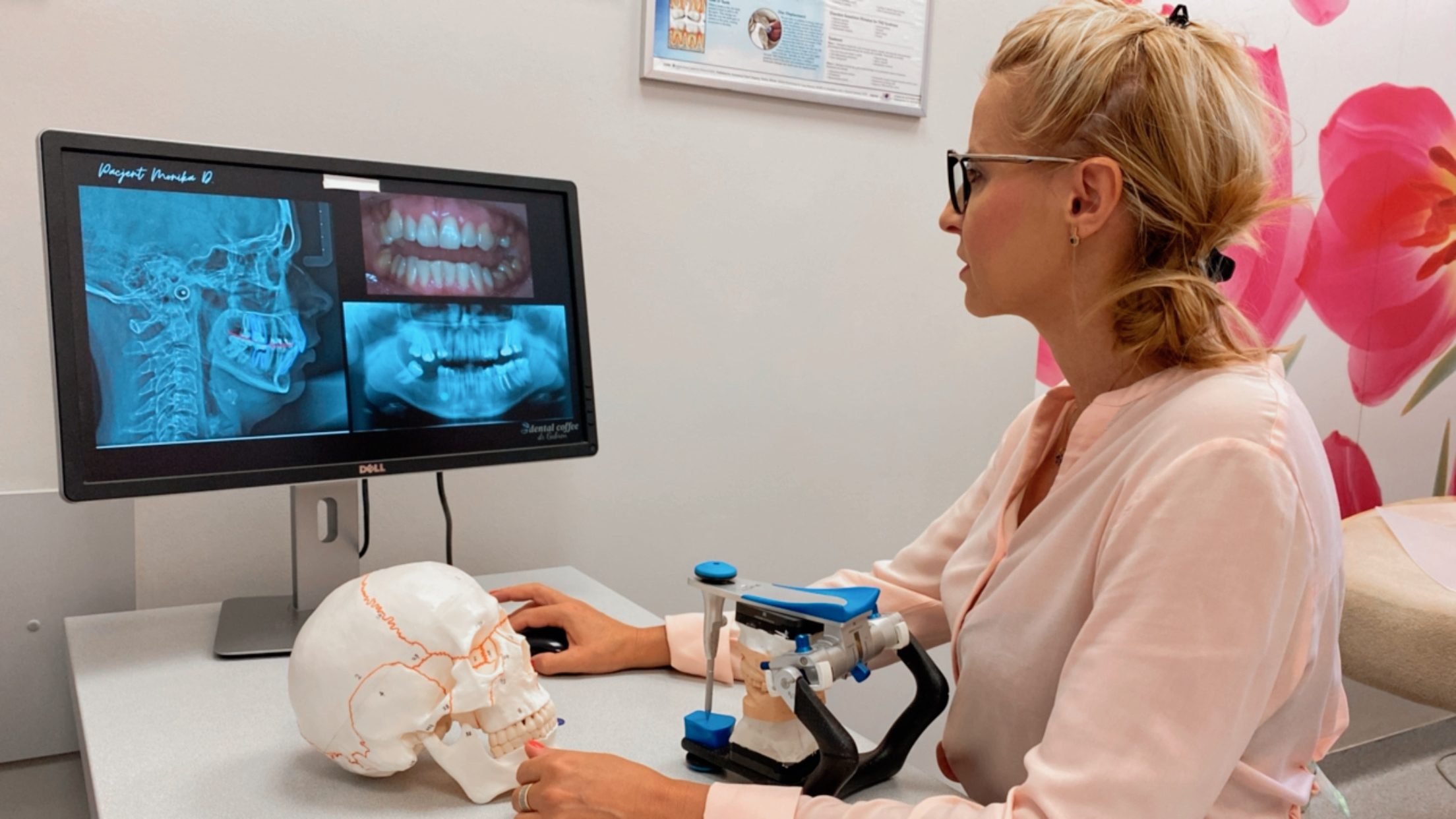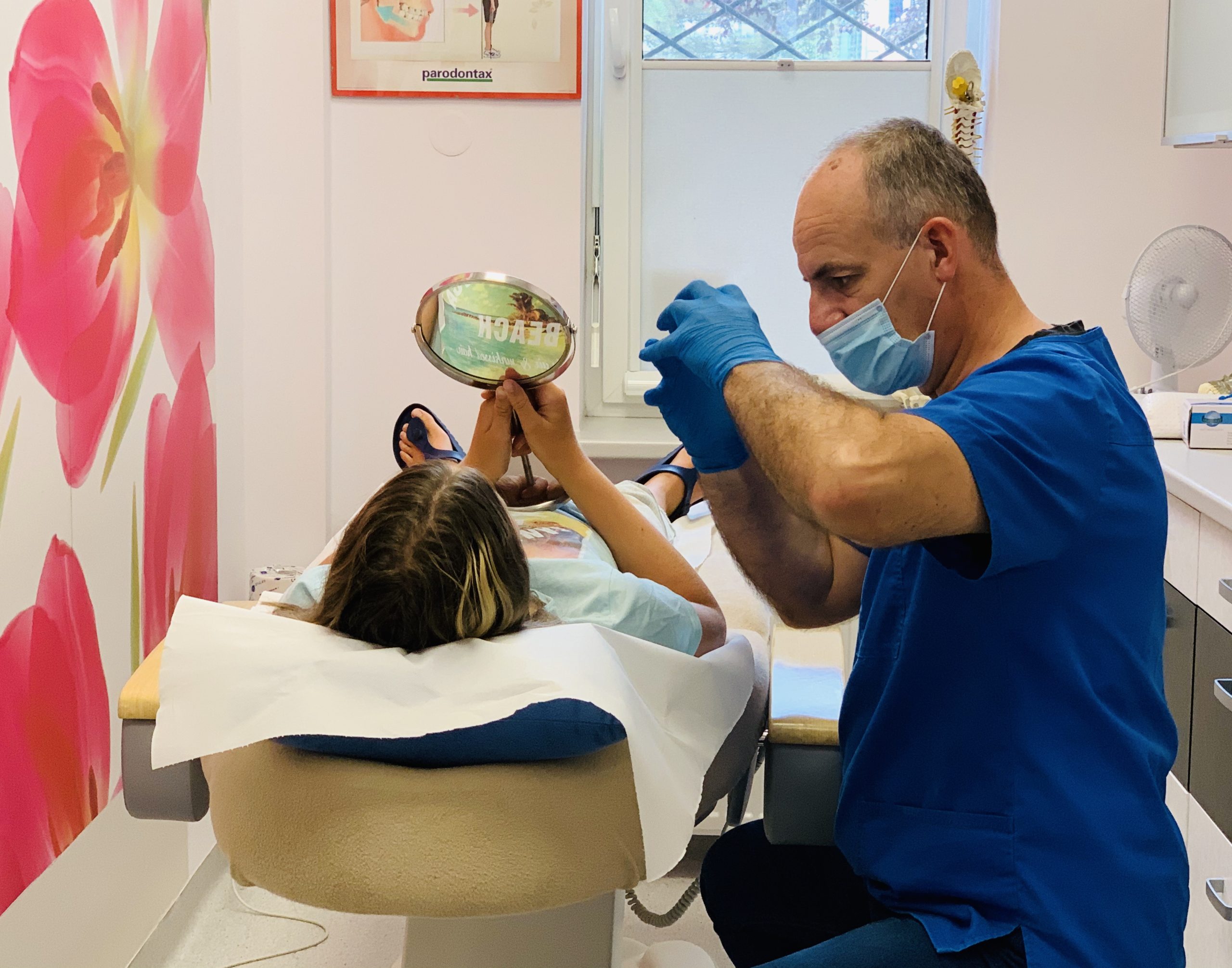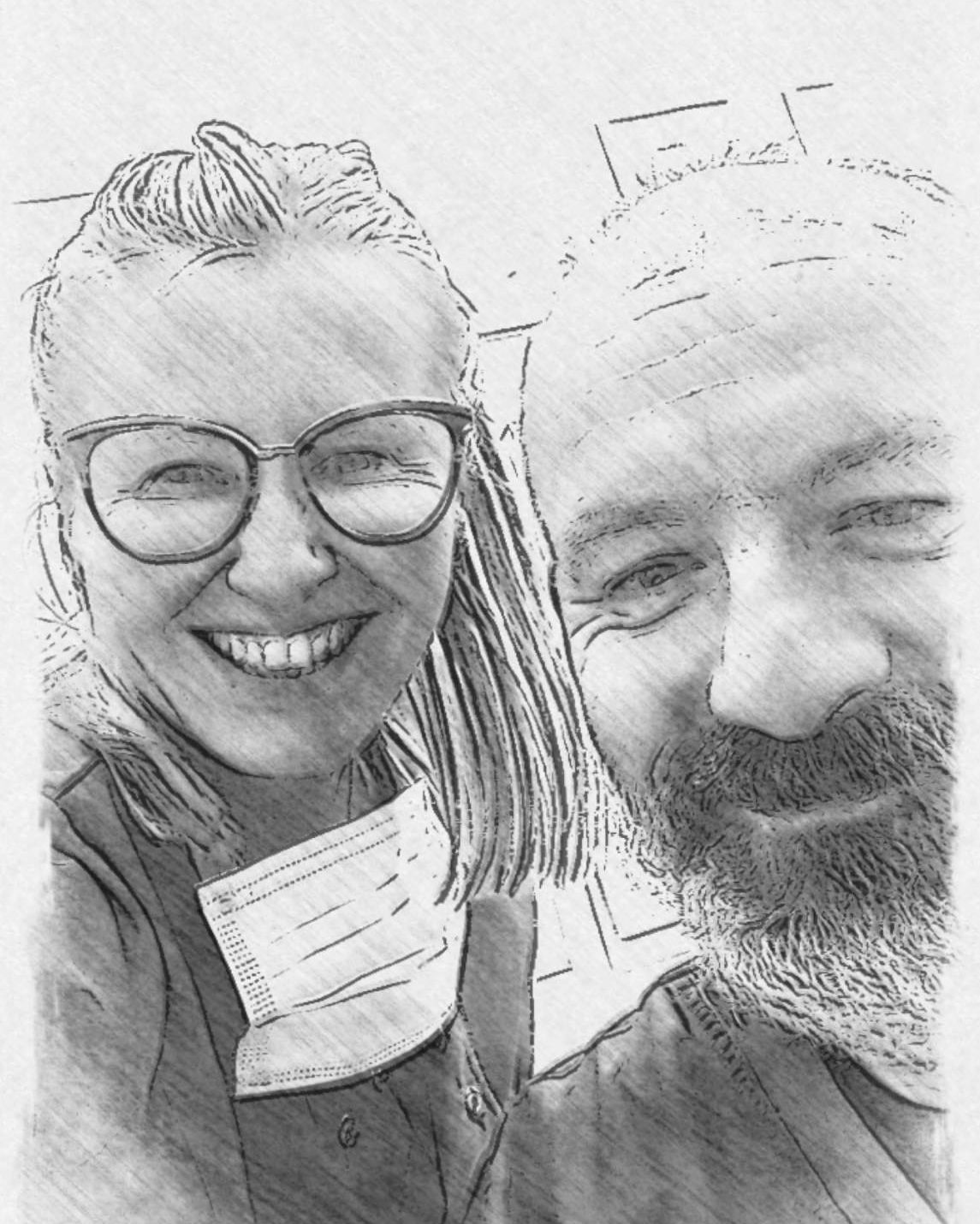Consultation regarding temporomandibular joints
Dentysta stomatolog Warszawa Ursynów ADENTIS / Services / Rehabilitation of temporomandibular joints / Consultation regarding temporomandibular joints

The consultation is subject to a fee according to the Office’s price list
is carried out on the basis of a panoramic X-ray (paid),
• which patient delivers or has the X-ray taken in the office (the patient always has the X-ray taken on site) if the patient does not have a panoramic radiograph with him, he undertakes to deliver it to the office
• and photos taken in the office with a digital camera (photos are taken free of charge – they are not issued to the patient – they are used for consultations and as medical documentation)
On the monitor located next to the chair – the doctor shows and explains what the digital photos and panoramic radiograph show).


The consultation includes:
• dental interview
• physical and subjective examination
• panoramic x-ray assessment
• oral examinations,
• examination of the abductor and adductor muscles of the jaw,
• assessment of short-circuit conditions,
• assessment of the position of the mandible to the maxilla,
• examination of the mandibular abduction path.

Additionally, the doctor may, with the patient’s consent:
• makediagnostic models (additionally paid according to the Office’s price list), which are cast in the workshop.
Then the next visit is model analysis (the models are drawn for the patient) and photo analysis. Tele X-ray (the photo is drawn on tracing paper and the doctor explains what it shows and what problems there are in the skull regarding the position of the jaw to the mandible).
 |
 |
| Diagnostic model of the jaw | Diagnostic model of the mandible |
When the patient decides on a pre-planned treatment plan, the neuromuscular position is taken, then diagnostic models are mounted to the articulator, in the neuromuscular position.
In case of problems related to the incorrect position of the maxilla to the mandible – the patient is usually referred to physiotherapy by a master of physiotherapy with whom we cooperate.
Such documentation is standard for treatment that will follow. The patient is treated as a whole – we do not treat only one tooth, we do not replace old prosthetic restorations with new ones without thorough diagnostics, we do not undertake orthodontic treatment without comprehensive preparation of the patient.
The treatment cannot be worse than the disease.
Prosthetics – if the patient does not decide to undergo comprehensive treatment and is informed about the problems and limitations he or she has in the oral cavity, he or she signs a consent to perform prosthetic work in a habitual bite, which is burdened with any irregularities of which he or she knows and passes realized.
Not knowing doesn’t make us safe
Orthodontics – we do not only deal with aligning teeth, that is, straightening them – we only undertake full orthodontic treatment (this concerns changing the position of the jaw to the mandible).
Parents are required to attend all consultation visits for children and adolescents.
Temporomandibular joint
- The first stage is to eliminate pain, depending on the problems, treatment is implemented (splint to relieve the joint – additionally paid according to the Office’s price list) and recommendations for painful joints
- the second stage is to eliminate the cause – treatment, which, depending on the needs, may be prosthetic or orthodontic treatment, which is initially presented during the consultation and detailed after further diagnostics.

Visit with Maciej Iwanowski, M.A. – rehabilitation specialist:
- assessment of the range of jaw movements,
- tension of the muscles controlling the operation of the jaw,
- possible pain points,
- position of the head of the mandible within the joints with the assessment of articular disc dislocation in the occlusal position and during movement,
- functional and resting position of the mandible in ssż,
- assessment of the head position in relation to the shoulder girdle, with particular emphasis on the apical segments and the cervical-thoracic transition,
- assessment of pelvic balance (stable, twisted pelvis),
- assessment of foot positioning,
- assessment of joint stability and spine curvatures.

Dr. Aleksandra Gabren
Maciej Iwanowski, M.A
